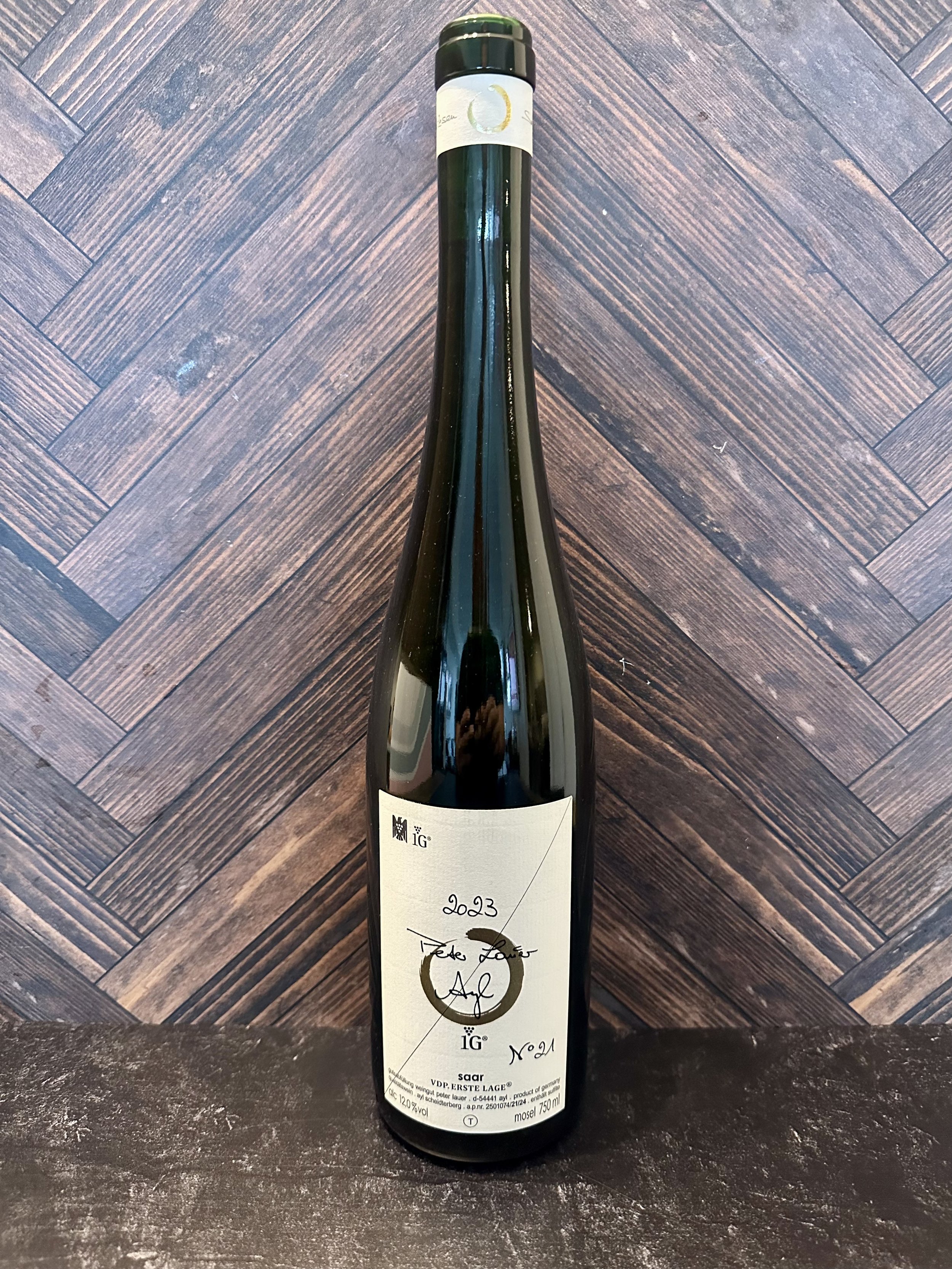Lauer Riesling No. 18 Kupp GG
The Kupp is name of the main vineyard that Florian Lauer farms. It is also the name of one of the three Grand Cru dry wines that Florian Lauer produces – the other two are Feils and Schonfels. Note in German these are called “Grosses Gewächs,” translating to “great growth.” You should be able to find on the labels the letters “GG,” denoting the fact they are “Grand Cru” and dry.
In a way, the Kupp GG is the final selection of the cherry parcels of the Kupp hill. As with Burgundy, most often Grand Cru, the best grapes, come from the mid-section of the hill – see the map in the gallery. The red-colored parcels are where Lauer sources the grapes: the middle section above Unterstenberg and below Stirn, as well as selected parcels both east and west.
The Kupp GG is normally the most “complete” of all the GGs; it is a wine that shows both fruit and depth (like Feils) as well as a dense mineral core of slate and salt (like Schonfels). It is perhaps the most elegant of the wines, with fine layers and a suave, polished finesse. Kupp tends to have more structure than Feils, so it normally needs a few years in the bottle to begin to show. It also benefits from a serious decant.
The Kupp is name of the main vineyard that Florian Lauer farms. It is also the name of one of the three Grand Cru dry wines that Florian Lauer produces – the other two are Feils and Schonfels. Note in German these are called “Grosses Gewächs,” translating to “great growth.” You should be able to find on the labels the letters “GG,” denoting the fact they are “Grand Cru” and dry.
In a way, the Kupp GG is the final selection of the cherry parcels of the Kupp hill. As with Burgundy, most often Grand Cru, the best grapes, come from the mid-section of the hill – see the map in the gallery. The red-colored parcels are where Lauer sources the grapes: the middle section above Unterstenberg and below Stirn, as well as selected parcels both east and west.
The Kupp GG is normally the most “complete” of all the GGs; it is a wine that shows both fruit and depth (like Feils) as well as a dense mineral core of slate and salt (like Schonfels). It is perhaps the most elegant of the wines, with fine layers and a suave, polished finesse. Kupp tends to have more structure than Feils, so it normally needs a few years in the bottle to begin to show. It also benefits from a serious decant.
The Kupp is name of the main vineyard that Florian Lauer farms. It is also the name of one of the three Grand Cru dry wines that Florian Lauer produces – the other two are Feils and Schonfels. Note in German these are called “Grosses Gewächs,” translating to “great growth.” You should be able to find on the labels the letters “GG,” denoting the fact they are “Grand Cru” and dry.
In a way, the Kupp GG is the final selection of the cherry parcels of the Kupp hill. As with Burgundy, most often Grand Cru, the best grapes, come from the mid-section of the hill – see the map in the gallery. The red-colored parcels are where Lauer sources the grapes: the middle section above Unterstenberg and below Stirn, as well as selected parcels both east and west.
The Kupp GG is normally the most “complete” of all the GGs; it is a wine that shows both fruit and depth (like Feils) as well as a dense mineral core of slate and salt (like Schonfels). It is perhaps the most elegant of the wines, with fine layers and a suave, polished finesse. Kupp tends to have more structure than Feils, so it normally needs a few years in the bottle to begin to show. It also benefits from a serious decant.

